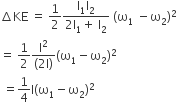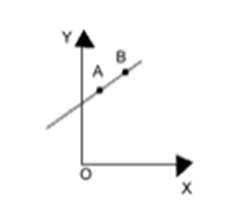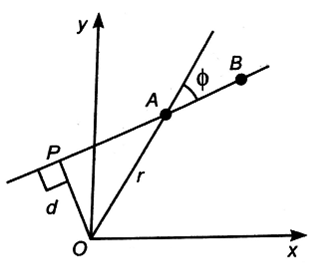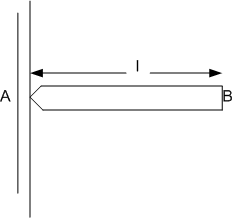A solid sphere is rotating freely about its symmetry axis in free space. The radius of the sphere is increased keeping its mass same. Which of the following physical quantities would remain constant for the sphere?
Angular velocity
Moment of inertia
Angular momentum
Rotational Kinetic energy
C.
Angular momentum
Angular momentum remains conserved until the torque acting on sphere remains zero.
i.e. L = constant
So angular momentum remains constant.
One end of a string of length l is connected to a particle of mass ‘m’ and the other end is connected to a small peg on a smooth horizontal table. If the particle moves in circle with speed ‘v’, the net force on the particle (directed towards centre) will be (T represents the tension in the string)
T



A.
T
Centripetal force mv2/l is provided by tension so the net force will be equal to tension i.e., T.
Two discs of same moment of inertia rotating about their regular axis passing through centre and perpendicular to the plane of the disc with angular velocities ω1 and ω2. They are brought into contact face to face coinciding the axis of rotation. The expression for loss of energy during this process is




B.

C.


A particle of mass m moves in the XY plane with a velocity v along the straight line AB. If the angular momentum of the particle with respect to origin O is LA when it is at A and LB when it is B, then: 
LA > LB
LA = LB
the relationship between LA and LB depends upon the slope of the line AB
the relationship between LA and LB depends upon the slope of the line AB
B.
LA = LB
From the definition of angular momentum,

Therefore, the magnitude of L is
L = mvr sin Φ = mvd
where d = r sin Φ is the distance of closest approach of the particle so the origin. As d is same for both the particles, hence, LA = LB
A uniform rod AB of length l and mass m is free to rotate about point A. The rod is released from rest in the horizontal position. Given that the moment of inertia of the rod about A is ml2/3, the initial angular acceleration of the rod will be:
2g/3l
mgl/2
3gl/2
3gl/2
D.
3gl/2
The moment of inertia of the uniform rod about an axis through one end and perpendicular to its length is
l = ml3/3
where m is a mass of rod and l is the  length.
length.
Torque acting on centre of gravity of rod is given by
